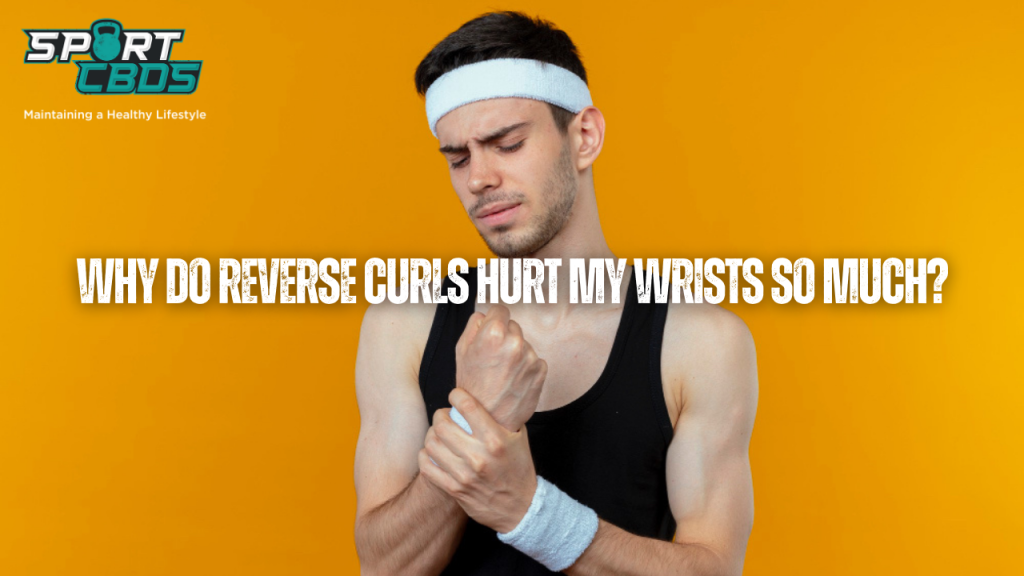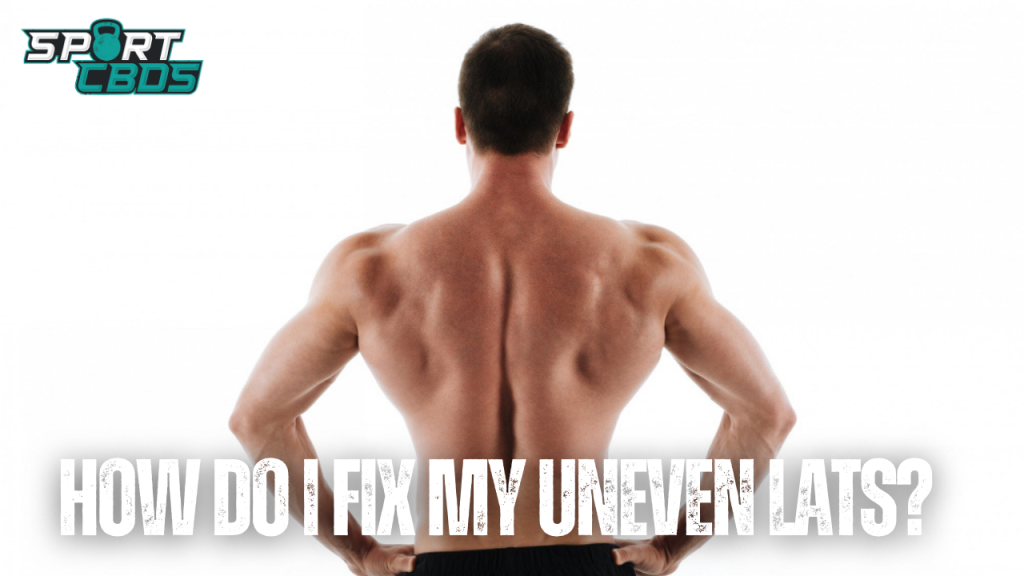
Why Do Reverse Curls Hurt My Wrists So Much? Everything You Need To Know
If you have ever wondered “why do reverse curls hurt my wrists”, then you’re in luck, as that’s the topic of todays blog.
Ever tried to take your bicep workout to the next level with some killer reverse curls, only to find your wrists screaming for mercy? We’ve all been there, and it can be a real workout killer.
Understanding why your wrists hurt during reverse curls and how to solve this issue is what we’ll be diving into today.
So, let’s get straight to it…
Why Do Reverse Curls Hurt My Wrists So Much?
Reverse curls can cause wrist pain for several reasons. Often, it’s due to improper technique, such as failing to maintain a neutral wrist position during the exercise or overloading the bar with too much weight. These errors can strain the wrists, placing undue stress on the triangular fibrocartilage complex, which is responsible for holding the wrist and forearm structures together. Furthermore, certain inherent factors like loose wrist ligaments, which allow too much movement, or tight wrist extensors can exacerbate the stress on the wrist during reverse curls. Grip fatigue, poor body mechanics, or weak forearms could also contribute to wrist pain during this exercise. It’s important to note that persistent pain should be addressed with the appropriate adjustments in technique and potentially seeking advice from a healthcare professional.
Basic Anatomy of the Wrist
Let’s start by revisiting some basic biology to better understand the wrist’s complexity before we delve into the reasons behind the wrist pain from reverse curls. Your wrist is an intricate joint, assembled from a group of eight tiny bones called the carpal bones. These form a tunnel-like structure, the perfect channel for your median nerve to pass through.
At the heart of your wrist lies the triangular fibrocartilage complex (TFCC). It’s a small but significant cartilaginous structure nested between your wrist and forearm. You could compare it to the shock absorber system of a vehicle, as its primary role is to dampen shocks and provide stability to your hand during activities that involve exertion, such as weightlifting.
Getting to Grips with the Dynamics of Reverse Curls
The difference between traditional bicep curls and reverse curls lies in the palm orientation – palms face upwards in bicep curls while they face downwards in reverse curls. This simple adjustment in the hand’s position engages different muscles and has a direct bearing on the amount of pressure exerted on your wrists.
In an ideal scenario, while performing reverse curls, the wrist remains straight and neutral. The trouble begins when this equilibrium is disturbed. What could potentially be causing this imbalance?
Related: Are Forearms Worth Training?
Understanding the Origins of Wrist Pain in Reverse Curls
Loose Wrist Ligaments
To better grasp this concept, envision your wrist ligaments as rubber bands in a slingshot. When they’re overly relaxed, they could permit too much movement, leading to instability. As each curl is performed, this instability can result in discomfort and pain due to the unsettling shift of the wrist bones.
Suboptimal Form and Technique
Occasionally, the problem is rooted in your form. Using bars for reverse curls might confine your motion and put undue strain on your wrists. Just like strumming a guitar with an incorrect hand position can disrupt the melody, performing curls with an erroneous form can lead to discomfort and potential harm.
Overstrain and Overloading
Increasing the weight in your reverse curls may seem like an excellent strategy to intensify your workout, but it can also impose excessive pressure on your wrists. It’s like asking a compact car to pull a semi-truck; it’s just too overwhelming.
Improper Wrist Position
If you’re not maintaining a neutral wrist position during your repetitions, it can place considerable stress on the TFCC. It’s comparable to trying to fit into shoes that are two sizes too small—discomfort is practically unavoidable.
Tense Wrist Extensors
During reverse curls, your wrist extensors, which aid in extending your hand and fingers, can become excessively tight. This is similar to a guitar string being over-tuned—it’s under high tension and more prone to breakage.
Other Contributing Factors
Lastly, a variety of other elements can contribute to wrist pain during reverse curls. Grip fatigue or a weak grip, inappropriate body mechanics, issues with wrist flexion and extension, a restricted range of motion, and feeble forearms can all play a significant role.

Implementing Practical Solutions to Alleviate Wrist Pain in Reverse Curls
The good news is, you don’t have to endure wrist pain during reverse curls. Here are some feasible remedies:
Perfecting Wrist Position
Preserving a neutral wrist position throughout your curls is paramount. Visualize it as keeping a book balanced on your head while strolling—it requires concentration and precision, but the effort reduces discomfort considerably.
Boosting Stability
Augmenting overall stability during the exercise can also prove beneficial. This could involve strengthening your core muscles, or perhaps giving more attention to the steadiness of your foundational support (your feet and legs) throughout the exercise.
Balancing Training Loads
Overburdening your bar with excessive weight can quickly lead to wrist pain. Adjusting your weights to a level that provides a challenge but doesn’t overstrain your wrists is crucial. The goal isn’t to hoist as much weight as possible—it’s about selecting the appropriate weight for your body’s capabilities.
Enhancing Tendon Health
Promoting healthy tendons is a key strategy in preventing wrist pain. Consider integrating some tendon-strengthening exercises into your fitness routine, and think about supplementing your diet with nutrients known to aid tendon health, such as collagen.
Embracing Avoidance
Finally, if wrist pain continues despite making these modifications, it might be time to consider an alternative to reverse curls. Keep in mind that the purpose of exercising is to bolster your health and fitness, not to inflict pain upon yourself.
Extra Measures for Wrist Pain Prevention
Preventing wrist pain isn’t only about tweaking your form or diminishing your weight load. It also encompasses overall lifestyle alterations and modifications to your workout routine.
Importance of Warm Up and Wrist Flexibility Exercises
The significance of an adequate warm up and dedicated wrist flexibility exercises cannot be understated. These practices enhance blood circulation to your muscles and tendons, priming them for the exertion ahead.
Boosting Forearm Muscle Strength
Robust forearms can lend support to your wrists during reverse curls, mitigating the likelihood of pain. Make it a point to incorporate exercises that focus on strengthening your forearm muscles into your fitness regimen.
Utilising Supportive Workout Accessories
Consider the addition of wrist wraps or other supportive fitness accessories during your workout. These can offer extra support and aid in maintaining your wrists in a neutral position.
Related: Why Do I Get Wrist Pain When I Do Bicep Curls and Skull Crushers?
Workout to Improve Wrist Strength
Always remember, consistency is key. Perform this workout 2-3 times a week, in addition to your regular training, and you should start to see improvements in your wrist strength and stability.
Wrist Curls: Grab a light dumbbell in each hand, sit on a bench, and rest your forearms on your thighs with your palms facing up. Allow the dumbbells to roll down to your fingertips, then curl them back into your palms and lift into a wrist curl.
Aim for 3 sets of 15 reps.
Reverse Wrist Curls: This is similar to the wrist curls, but your palms are facing down. Rest your forearms on your thighs with your wrists just beyond the knees. Lower the weights as far as possible, then lift them as high as you can.
Again, aim for 3 sets of 15 reps.
Grip Strengthener: Using a grip strengthener or a tennis ball, squeeze as hard as you can, hold for a few seconds, and release. Repeat this for 10-15 reps for 3 sets. This simple exercise can be done anywhere and is great for improving your grip strength.
Farmer’s Walk: This classic exercise is great for overall strength and conditioning but also does wonders for your grip and forearm strength. Simply hold a heavy dumbbell in each hand and walk for a set distance or time.
Aim for 2-3 sets of 30-60 seconds.
Finger Taps: Extend one arm in front of you with the palm facing up. With your other hand, tap each finger to your thumb, creating an “O” shape. Do this for each finger 10 times, then switch hands. This is great for improving dexterity as well as strength.
Push-ups with a Fist: Perform push-ups with your hands in a fist, not flat on the ground. This requires more wrist strength and stability.
Aim for 3 sets of 10 reps, or as many as you can do with proper form.
FAQs
Do reverse curls effectively target the forearms?
Indeed, reverse curls are known to significantly work the muscles in the forearms in addition to the biceps. The unique grip used in this exercise challenges these muscles, helping to strengthen them.
Why do my wrists ache each time I perform bicep curls or a pull down?
This could be due to several factors such as incorrect form, excessive weight load, or a failure to maintain a neutral wrist position. It’s important to ensure your technique is correct and that you’re not overloading your wrists.
Is it normal for shoulders to hurt after bicep curls?
Not typically. Shoulder pain after bicep curls may suggest that you’re using your shoulder muscles to lift the weight rather than your biceps. Make sure to keep your elbows close to your body and avoid swaying or moving your shoulders during the lift.
Why do my wrists hurt when I perform reverse curls?
Wrist pain during reverse curls can occur due to several reasons like improper form, overloading the weight, not maintaining a neutral wrist position, or having tight wrist extensors. It’s essential to identify the cause and address it.
How can I perform reverse curls without wrist pain?
Ensuring correct form, maintaining a neutral wrist position, adjusting the weight load, and improving tendon health can all help reduce wrist pain during reverse curls. Additionally, performing wrist and forearm strengthening exercises can be beneficial.
Do reverse curls work the wrists?
While reverse curls primarily target the biceps and forearms, they do engage the wrist muscles to a degree. Proper wrist position and grip strength are important for performing this exercise effectively.
Why are reverse curls so painful?
Reverse curls might cause discomfort due to a variety of factors including improper form, excessive weight, failure to maintain a neutral wrist position, or weak forearm muscles. Understanding and addressing the cause can help mitigate the pain.
As always, it’s crucial to listen to your body and adapt your exercises to what feels right and comfortable for you. Pain is a signal that something might be off, so don’t ignore it. Keep your fitness journey a healthy and enjoyable one!
Final Thoughts…
The occurrence of wrist pain during reverse curls is a familiar predicament for many fitness enthusiasts. However, acquiring a deeper understanding of your wrist anatomy, the mechanics underlying reverse curls, and the possible causes of your wrist discomfort can significantly aid in devising effective solutions to this issue.
By refining your wrist position, bolstering stability, fine-tuning training loads, and enhancing tendon health, you can lessen your wrist discomfort and optimise your workout experience.
Keep in mind, if pain persists, it might be time to explore other exercise options or seek guidance from a healthcare professional. Fitness is a journey with inevitable adjustments along the way.
Do reverse curls hurt your wrists and have these tips helped? Let me know in the comments below.
If you enjoy sport and use CBD to help with your recovery in between gruelling workouts, then you are in the right place. Here at Sport CBDs, we train hard and recover the best way possible…
We have regular workouts (check out the YouTube channel), CBD news and CBD products to help you gain that edge!
If you wanted to check out the reputable CBD we have on offer here at the site, then please head to the Sport CBDs Store (CLICK HERE). We also do fitness clothing and yoga accessories too.
Until next time, all the best…

Lee
Founder – Sport CBDs
Featured Image Attribution – Image by stockking on Freepik

